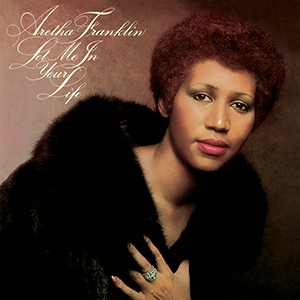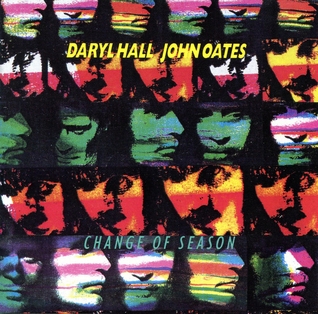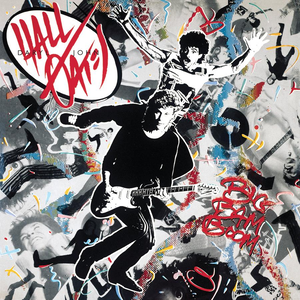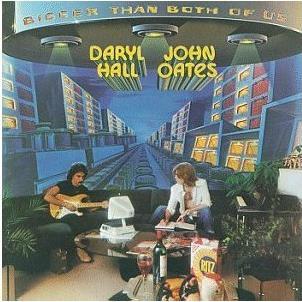
Daryl Hall and John Oates, commonly known as Hall & Oates, were an American pop rock duo formed in Philadelphia in 1970. Daryl Hall was generally the lead vocalist; John Oates primarily played the electric guitar and provided backing vocals. The two wrote most of the songs they performed, either separately or in collaboration. They achieved their greatest fame from the mid-1970s to the late 1980s with a fusion of rock and roll, soul music, and rhythm and blues.

Daryl Franklin Hohl, known professionally as Daryl Hall, is an American rock, R&B, and soul singer-songwriter and musician. He is best known as the co-founder and principal lead vocalist of Hall & Oates, with guitarist and songwriter John Oates. Outside of his work in Hall & Oates, he has also released five solo albums, including the 1980 progressive rock collaboration with guitarist Robert Fripp titled Sacred Songs and the 1986 album Three Hearts in the Happy Ending Machine, which provided his best selling single, "Dreamtime", that peaked at number five on the Billboard Hot 100. He has also collaborated on numerous works by other artists, such as Fripp's 1979 release Exposure, and Dusty Springfield's 1995 album A Very Fine Love, which produced a UK Top 40 hit with "Wherever Would I Be". Since late 2007, he has hosted the streaming television series Live from Daryl's House, in which he performs alongside other artists, doing a mix of songs from each's catalog. The show has been rebroadcast on a number of cable and satellite channels as well.

John William Oates is an American musician, best known as half of the rock and soul duo Hall & Oates along with Daryl Hall. He has played rock, R&B, and soul music, serving as a guitarist, singer, songwriter, and record producer.

Let Me in Your Life is the twentieth studio album by American singer Aretha Franklin, released on February 26, 1974, by Atlantic Records.

Do It for Love is the sixteenth studio album by pop music duo Hall & Oates. The album was released on February 11, 2003, by U-Watch Records and Sanctuary Records. The title track peaked at No. 1 on Adult Contemporary charts making it the 8th No. 1 hit of their career, and "Forever For You", "Man on a Mission", and "Getaway Car" all charted as well. It was their first album of all-new material in six years and their last full album of original material.

"I Can't Go for That (No Can Do)" is a song by American duo Hall & Oates. Written by Daryl Hall, John Oates and Sara Allen, the song was released as the second single from their tenth studio album, Private Eyes (1981). The song became the fourth number one hit single of their career on the Billboard Hot 100. It features Charles DeChant on saxophone.

Private Eyes is the tenth studio album by American pop rock duo Hall & Oates, released on September 1, 1981, by RCA Records. The album includes two number-one singles—the title track and "I Can't Go for That ", as well as the top-10 single "Did It in a Minute". "I Can't Go for That " also spent a week at the top of the R&B chart.

Change of Season is the fourteenth studio album by American pop music duo Daryl Hall & John Oates. The album was released in October 1990, by Arista Records. The lead single "So Close" peaked at No. 11 on the Billboard Hot 100 and was their last Top 40 hit, while the second single "Don't Hold Back Your Love" just missed the Top 40 reaching #41. It was their second and final album for Arista.

Marigold Sky is the fifteenth studio album by American pop music duo Hall & Oates. The album was released on September 17, 1997, by Push Records. It reached #95 on the Billboard 200 and #179 on the UK Albums Chart.

Big Bam Boom is the twelfth studio album by American duo Daryl Hall & John Oates, released by RCA Records on October 12, 1984. It marked the end of one of the most successful album runs by a duo of the 1980s. RCA issued a remastered version in July 2004 with four bonus tracks. The lead single "Out of Touch" was a #1 pop hit, and charted in several other areas. Another song taken from the album, the Daryl Hall and Janna Allen-penned "Method of Modern Love" reached a high point of #5, and "Some Things Are Better Left Unsaid," reached #18.

Rock 'n Soul Part 1 is a greatest hits album by American musical duo Hall & Oates, credited as "Daryl Hall John Oates" on the album cover. Released by RCA Records on October 18, 1983, the album featured mostly hit singles recorded by the duo and released by RCA, along with one single from the duo's period with Atlantic Records and two previously unreleased songs recorded earlier in the year: "Say It Isn't So" and "Adult Education".

Bigger Than Both of Us is the fifth studio album by American pop rock duo Daryl Hall and John Oates. The album was released on September 8, 1976, by RCA Records and peaked at #13 on the Billboard Top 200 Albums chart. The album included the first of their six #1 singles on the Billboard Hot 100, "Rich Girl" as well as the singles "Back Together Again" and "Do What You Want, Be What You Are". Hall & Oates released a song titled "Bigger Than Both of Us" on their Beauty on a Back Street album one year later. "Do What You Want, Be What You Are" was covered by The Dramatics in 1979.

Home for Christmas is the eighteenth and final studio album by Hall & Oates, and their only full-length album of Christmas music. It was released in the US on October 3, 2006. A portion of the proceeds of the sale of this album goes to Toys for Tots. It was only available at Trans World Entertainment music stores in 2006, but has since become available at all retail outlets.

Soul Alone is the third studio album by American singer and musician Daryl Hall, released in 1993 on Epic Records. Distinct from the sound of his successful duo Hall & Oates, this album features a more soulful and jazzy feel, with production by Hall with Peter Lord Moreland and V. Jeffrey Smith from R&B group The Family Stand, and Michael Peden. However, Epic failed to find a marketing niche for Hall's new sound, and the album was not a commercial success. Soul Alone features singer Mariah Carey, Alan Gorrie from the Average White Band, and producer/multi-instrumentalist Walter Afanasieff as composers. Four singles were released from the album: "I'm in a Philly Mood," "Stop Loving Me, Stop Loving You," "Help Me Find a Way to Your Heart" and "Wildfire." The Japanese version of the album came with an extra 12th track, "I've Finally Seen the Light."

Whole Oats is the debut studio album by American pop music duo Hall & Oates. The album was released in September 1972, by Atlantic Records.

No Goodbyes is a 1977 collection by Hall & Oates. It is a "Best of" compilation of their first three Atlantic Records recordings. No Goodbyes was released after the duo left Atlantic and joined RCA Records, and after Atlantic had achieved a Top 10 hit with a re-release of "She's Gone". It contains three new songs: "It's Uncanny," "I Want to Know You for a Long Time," and "Love You Like a Brother." The latter two of these were later released on The Atlantic Collection. "It's Uncanny" was released as a single upon this album's release but failed to break the Billboard Top 40, reaching only #80. "Love You Like a Brother" was re-released on the 2009 four-disc box set Do What You Want, Be What You Are, as was "It's Uncanny."

The 1972 Atlantic release Roberta Flack & Donny Hathaway is a million-selling duet album by Roberta Flack and Donny Hathaway produced by Joel Dorn and Arif Mardin.

"Rock Steady" is a song written and performed by American singer-songwriter Aretha Franklin, released in October 1971 from her eighteenth album, Young, Gifted and Black (1972). The single reached the #9 spot on the Billboard Hot 100 charts that same year. It also peaked at #2 on the Best Selling Soul Singles chart. The original A-side, a rendition of the song "Oh Me Oh My ", peaked at #73 on the Billboard Hot 100 and #9 on the Best Selling Soul Singles chart.

Hey Ricky is the title of the tenth album release by Melissa Manchester. It was issued on Arista Records in April 1982.

"She's Gone" is a song written and originally performed by the American duo Daryl Hall and John Oates. The soul ballad is included on their 1973 album, Abandoned Luncheonette.




















